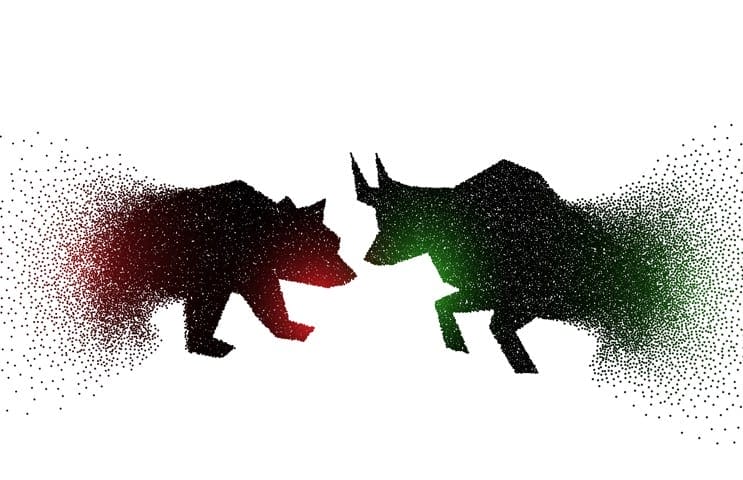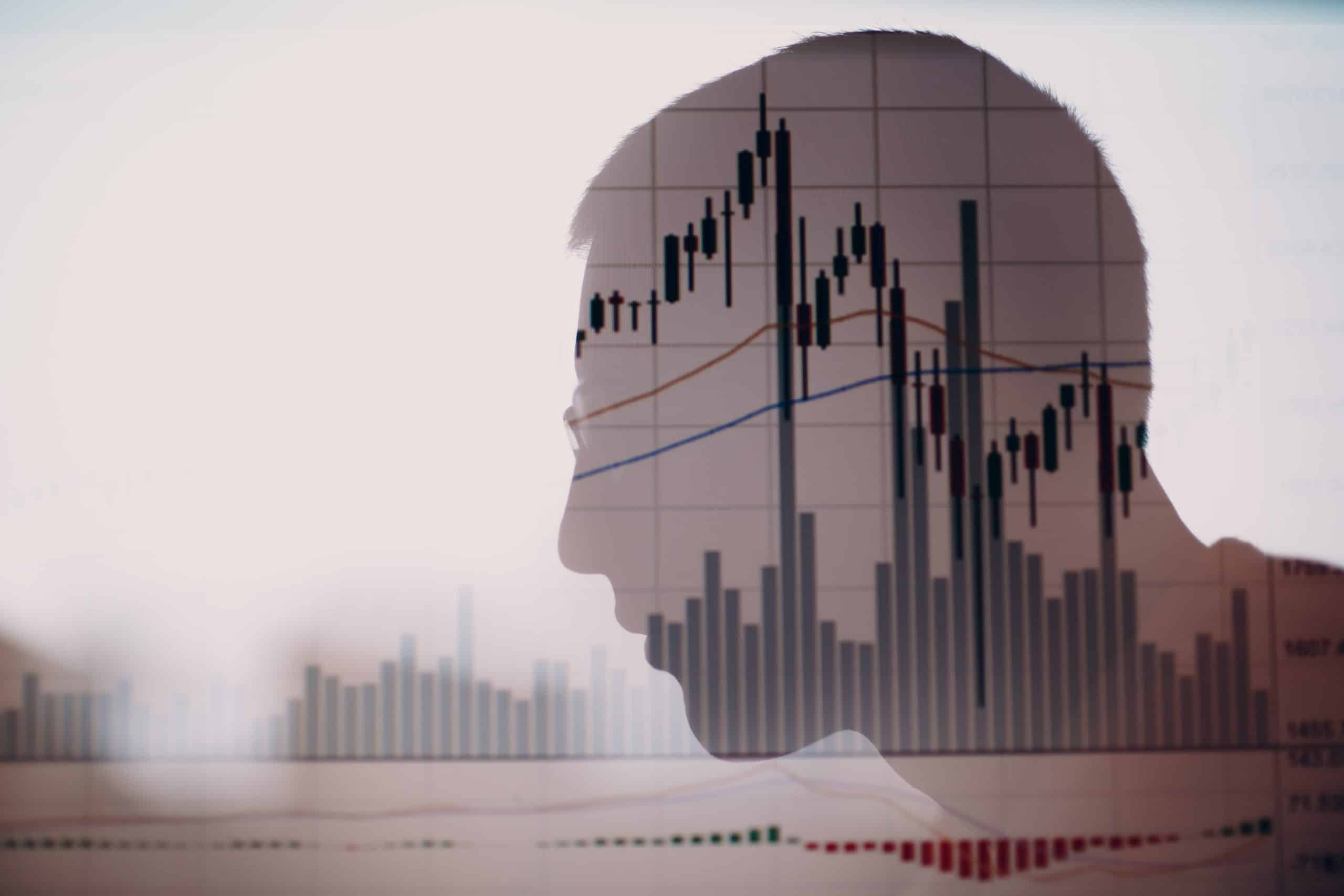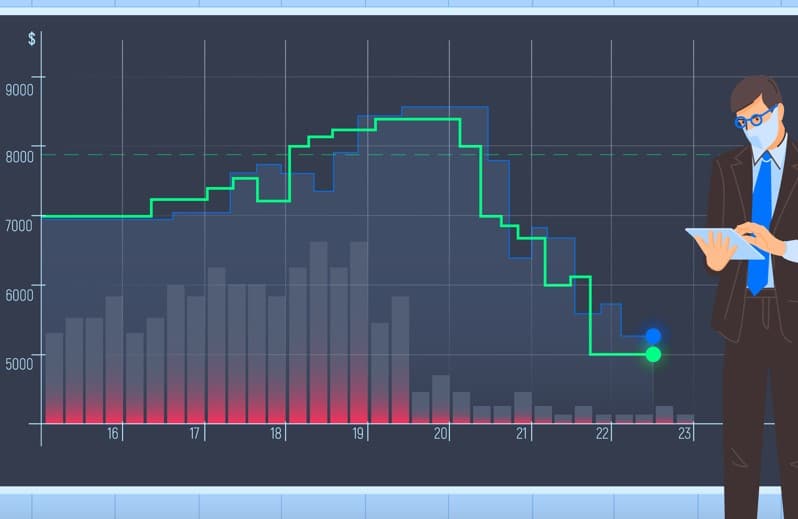Importance of Candlestick Patterns in Trading
Candlestick patterns are a powerful trading tool that can help you to improve your decision-making accuracy. The key is their ability to identify reversals in the trend and continuations in the market before they occur. This early warning system can provide a significant trading edge.
Candlestick patterns can signal to traders that the market sentiment is about to change. For example, after a long uptrend (a period of rising prices), a bearish candlestick pattern could indicate that the trend is about to reverse. On the other hand, after a downtrend (a period of falling prices), a bullish candlestick pattern could suggest an upcoming upward trend.
There are dozens of candlestick patterns, each with its own implications and predictive power. By studying and recognizing these patterns, traders can make informed decisions about when to enter or exit trades, helping to maximize profits and minimize losses.
It’s important to note that candlestick patterns should not be used in isolation but in conjunction with other technical analysis tools, as they do not provide infallible predictions. They merely offer probabilities – not certainties – about future price movements.

Candlestick Psychology
Candlestick psychology pertains to understanding the sentiments or the psychological aspects of traders that can be inferred from the candlestick patterns that form on the charts. The color, shape, and positioning of candlesticks within a particular pattern often offer insights into market sentiment.
For instance, a long bullish candlestick (where closing price is higher than the opening price) indicates strong buying pressure. The length of the candlestick signifies the strength of buyers’ sentiment. A long bearish candlestick, on the other hand, shows strong selling pressure.
Analyzing individual candlesticks is just the first step towards understanding candlestick psychology. The true power of this approach lies in recognizing complex candlestick patterns formed by groups of candlesticks. For example, the ‘bullish engulfing’ pattern is seen as a clear sign of a change in market sentiment from bearish to bullish.
Understanding Candlestick Charts in Forex Trading

Candlestick charts are a technical tool that packs data for multiple time frames into single price bars. This makes them more useful than traditional open-high, low-close bars or simple lines that connect the dots of closing prices.
Each candlestick usually represents one day’s worth of price data about a stock. Over time, the candlesticks group into recognizable patterns that traders can use to make buying and selling decisions.
Here’s how to read a candlestick:
- The body, which looks like a rectangular box, represents the range between the opening price and the closing price.
- If the body is filled (usually colored), it means the opening price was higher than the closing price or the price has fallen over that period (Bearish Candle). If the body is empty (uncolored), it means the closing price was higher than the opening price or the price has risen over that period (Bullish Candle).
- The thin lines poking above and below the body display the high/low range and are called shadows, wicks, or tails. The top of the upper shadow is the ‘high’. The bottom of the lower shadow is the ‘low’.
History of Candlestick Charts

Candlestick charts originated in Japan during the 17th century, developed by Homma Munehisa, a successful rice trader. Homma observed that price movements in the rice markets were influenced not only by supply and demand but also by traders’ emotions and psychology. He documented his observations and strategies in a book called “Sakata Senho,” considered one of the earliest works on technical analysis.
Homma’s candlestick charting method involved representing price movements using candlestick shapes, resembling the modern-day candlesticks we see on charts. The “candle” shape consists of a rectangular body and thin lines (wicks or shadows) extending from the top and bottom of the body, resembling a candle with wicks.
Over time, candlestick charts became widely used by Japanese rice traders to analyze market sentiment and price movements effectively. However, it wasn’t until the 1980s that candlestick charting gained popularity in the Western world, thanks to the efforts of Steve Nison, who introduced candlestick analysis to Western traders through his book, “Japanese Candlestick Charting Techniques.”
Anatomy of a Candlestick

Understanding the anatomy of a candlestick is crucial for interpreting candlestick patterns accurately. Each candlestick consists of the following components:
- Body: The rectangular part of the candlestick represents the price range between the opening and closing prices during a specific time period, such as a minute, hour, day, or week. The body is colored differently based on whether the closing price is higher (typically green or white) or lower (usually red or black) than the opening price.
- Upper Wick: The thin line extending from the top of the body represents the highest price reached during the time period.
- Lower Wick: The thin line extending from the bottom of the body represents the lowest price reached during the time period.
The length of the wicks provides information about the price range covered during the specific time period, while the body’s color indicates the direction of price movement.
Bullish Patterns

Bullish candlestick patterns are formations that suggest potential upward price movements. These patterns often indicate buying pressure and optimism among traders. Some common bullish patterns include:
- Morning Star: This three-candle pattern consists of a large bearish candle followed by a small body (either bullish or bearish) that gaps down, and finally, a large bullish candle. The morning star signals a potential trend reversal, with the third candle indicating renewed buying interest.
- Bullish Harami: A bullish harami forms when a small bullish candle (second candle) is completely engulfed by the preceding larger bearish candle. This pattern suggests a possible trend reversal and a shift from selling pressure to buying pressure.
- Piercing Line: The piercing line pattern forms when a bullish candle’s close is above the midpoint of the preceding bearish candle. This suggests a potential reversal as buyers have overcome selling pressure, resulting in a bullish move.
Bearish Patterns
Bearish candlestick patterns are formations that suggest potential downward price movements. These patterns indicate selling pressure and pessimism among traders. Some common bearish patterns include:
- Evening Star: The evening star is the opposite of the morning star and is a bearish reversal pattern. It consists of a large bullish candle followed by a small body (either bullish or bearish) that gaps up, and finally, a large bearish candle. The evening star signals a potential trend reversal, with the third candle indicating renewed selling interest.
- Bearish Harami: A bearish harami forms when a small bearish candle (second candle) is completely engulfed by the preceding larger bullish candle. This pattern suggests a possible trend reversal and a shift from buying pressure to selling pressure.
- Dark Cloud Cover: The dark cloud cover pattern occurs when a bearish candle’s close is below the midpoint of the preceding bullish candle. This indicates a potential reversal as sellers have overcome buying pressure, leading to a bearish move.
Understanding these common candlestick patterns and their significance allows traders to identify potential trend reversals and continuation signals, leading to more accurate trading decisions.
Behavioral Psychology in Candlestick Patterns

Candlestick patterns are rooted in behavioral psychology, as they represent the collective emotions and actions of traders in the market. The market is a reflection of human behavior, and price movements are influenced by emotions such as fear, greed, hope, and uncertainty.
For example, a hammer pattern forming at the end of a downtrend signals that sellers have lost control, and buyers are stepping in, creating a potential reversal. This pattern reflects the fear of sellers who pushed prices lower but were unable to maintain control, leading to buying pressure.
Similarly, a bearish engulfing pattern indicates that after a period of bullishness, sellers have gained the upper hand, and buyers are losing control. This pattern reveals the greed of buyers who pushed prices higher but were ultimately overpowered by sellers looking to profit from the overextended market.
Traders who understand these psychological dynamics can use candlestick patterns to identify potential turning points in the market and align their trading strategies accordingly. By recognizing patterns driven by fear, greed, and other emotions, traders can make more informed and disciplined decisions, reducing emotional biases and improving overall trading performance.
Improving trade entry and exit strategies in the forex market involves a delicate balance of technical analysis, fundamental understanding, and psychological insights. One effective tool for achieving this balance is the study of forex candlestick psychology. Candlestick patterns provide traders with valuable information about market sentiment, helping them make more informed decisions regarding when to enter or exit trades.
Candlestick patterns are graphical representations of price movements within a specific time frame. These patterns reflect the interplay between market participants’ emotions, predominantly fear and greed, and can offer insights into potential price reversals or continuations. By understanding the psychology behind certain candlestick formations, traders can enhance their strategies.
During the trade entry phase, candlestick patterns can signal opportune moments to initiate a trade. For instance, a bullish engulfing pattern, where a smaller bearish candle is followed by a larger bullish candle, can indicate a potential reversal from a downtrend to an uptrend. This pattern suggests that buying pressure has overcome selling pressure, potentially presenting an attractive entry point for long positions.
Conversely, candlestick patterns can also aid in determining optimal exit points. Traders seek confirmation through patterns like a shooting star, which occurs after an uptrend. This formation consists of a small-bodied candle with a long upper wick, suggesting a potential price reversal. Traders might consider this as a signal to exit or even consider short positions if other factors align.
The psychology underlying these patterns is crucial. For example, a doji, where the opening and closing prices are nearly identical, showcases market indecision. Traders interpret this as a tug-of-war between buyers and sellers, often indicating a potential trend reversal. However, context matters; a doji in the midst of a strong uptrend might not be as significant as one occurring after a prolonged sideways movement.
Key Candlestick Patterns and Their Psychological Implications

Candlestick patterns are formed by one or more candlesticks. They can tell a story about the struggle between buyers and sellers in the market. By understanding what these patterns signify, traders can predict potential price movements. Here are a few key patterns:
- Doji: A Doji is a pattern that occurs when the opening and closing prices are virtually the same. It represents indecision in the market, suggesting that the buyers and sellers are evenly matched. Depending on where a Doji appears in the price sequence, it can signal a potential reversal in the market.
- Hammer: The Hammer is a bullish reversal pattern that forms after a decline in price. It has a small body and a long lower wick, which should be twice the length of the body. It indicates that sellers drove prices down during the period, but strong buying pressure pushed them back up to close near the opening price.
- Hanging Man: The Hanging Man is a bearish reversal pattern that also consists of a small body and a long lower wick. However, it forms after an uptrend. It suggests that even though there was significant selling pressure during the period, buyers were able to push the price back up. But the appearance of this pattern after an uptrend signals that selling pressure is starting to increase, which could indicate a future price drop.
- Shooting Star: The Shooting Star is another bearish reversal pattern that forms after an uptrend and has a small body with a long upper wick. It indicates that buyers pushed prices up during the period, but sellers took over and pushed prices back down to near the opening price. This suggests a change in sentiment and could precede a price fall.
By understanding the psychological implications behind these patterns, traders can make more informed decisions. For example, seeing a Doji after a long uptrend could indicate that buyers are losing control and a reversal might be on the horizon, signaling that it might be a good time to exit a long position or potentially even go short.
Keep in mind that candlestick patterns are more reliable when used in conjunction with other technical analysis tools and should not be relied upon in isolation.
Combining Candlestick Psychology with Technical Analysis

While candlestick patterns can provide valuable insights into market psychology, they become even more powerful when used in combination with other forms of technical analysis.
- Trend lines: Trend lines are lines drawn on a price chart that connect two or more price points. When a trend line is upward, it shows that the market is in an uptrend. Conversely, a downward trend line indicates a downtrend. If a bullish candlestick pattern forms at an upward trend line, it could indicate a strong buying opportunity.
- Moving averages: A moving average is a constantly updated line on a price chart that smooths out price data by creating a constantly updated average price. If a bullish candlestick pattern forms and the price is above the moving average, it could signal a buying opportunity. Conversely, if a bearish candlestick pattern forms and the price is below the moving average, it could suggest a selling opportunity.
- Resistance and support levels: Resistance levels are price levels at which selling is thought to be strong enough to prevent the price from rising further, while support levels are price levels at which buying is strong enough to prevent the price from falling further. If a bullish candlestick pattern forms at a support level, it could suggest a buying opportunity. Conversely, a bearish candlestick pattern at a resistance level could indicate a selling opportunity.
Integrating Candlestick Psychology into Trading Strategies

- Trend Following with Candlesticks: Trend following strategies involve identifying and trading in the direction of the prevailing market trend. By using candlestick patterns in conjunction with trend analysis, traders can confirm trend strength and potential reversal points. For example, in an uptrend, traders can look for bullish continuation patterns like bullish engulfing patterns to add to existing positions, and in a downtrend, they can look for bearish continuation patterns like bearish engulfing patterns to reinforce short positions.
- Counter-Trend Trading with Candlesticks: Counter-trend trading strategies involve trading against the prevailing market trend, aiming to profit from potential reversals. Traders can use candlestick patterns to identify potential turning points and spot market exhaustion. Counter-trend traders might look for reversal patterns like evening stars or shooting stars at key support and resistance levels to signal potential trend changes.
- Swing Trading with Candlestick Patterns: Swing trading strategies aim to capture price swings within a trend. By combining candlestick patterns with support and resistance levels, swing traders can identify potential entry and exit points. Swing traders may use candlestick patterns like hammers or engulfing patterns near support levels as buy signals, and shooting stars or bearish engulfing patterns near resistance levels as sell signals.
- Scalping Strategies with Candlesticks: Scalping strategies involve making multiple quick trades throughout the day to profit from small price movements. Scalpers can utilize candlestick patterns to identify rapid changes in sentiment and market direction. For example, scalpers may use doji patterns or hammers on shorter time frames to spot potential price reversals and take advantage of short-term opportunities.
By integrating candlestick psychology into various trading strategies, traders can adapt to different market conditions and make well-informed decisions to improve their overall trading performance.
Trade Entry Strategy with Candlestick Psychology

Candlestick psychology can play a pivotal role in optimizing trade entry. For instance, bullish candlestick patterns like the Hammer, Bullish Engulfing, or Morning Star could signal potential buying opportunities.
Let’s say you see a Hammer form at a significant support level after a prolonged downtrend. This could be a sign that sellers are losing control and buyers are ready to take over. If the next candlestick confirms the reversal (by closing above the Hammer), this could be a good opportunity to enter a long position.
Remember, it’s crucial to consider other technical analysis indicators and not solely rely on candlestick patterns. The more confluence factors you have supporting your decision to enter a trade, the higher the likelihood of success.
Risk Management in Forex Trading

Risk management is a crucial component of successful trading. Without proper risk management, traders are likely to lose all their capital over time, no matter how good their trading strategy is. There are several key components of risk management:
- Setting Stop-Loss Orders: A stop-loss order is an instruction to close out a trade at a price that is less favorable than the current market level. Stop-loss orders are used to limit losses on a position. Traders can use candlestick patterns to help identify ideal stop-loss levels. For instance, if you entered a long trade due to a bullish candlestick pattern, you could place a stop-loss order below the lowest point of the pattern.
- Setting Take-Profit Orders: A take-profit order is an instruction to close out a trade at a price that is more favorable than the current market level. Traders use take-profit orders to lock in profits when they are not monitoring the market. Similar to stop-loss orders, candlestick patterns can help identify optimal take-profit levels.
- Risk/Reward Ratio: This is the amount of risk you are willing to take for each unit of reward. A common risk/reward ratio used by many traders is 1:3, meaning that the potential profit of a trade is three times greater than the potential loss.
Practical Examples of Candlestick Psychology in Trade Entry and Exit
In this section, you could present several examples of trades that incorporate candlestick psychology. You could show charts with different candlestick patterns and discuss how these patterns could have been used to enter or exit trades. This would provide readers with a practical understanding of how to apply candlestick psychology in their trading.
For instance, you could demonstrate a scenario where a Bullish Engulfing pattern forms near a major support level. This pattern, combined with the support level, could be used as a signal to enter a long trade. You could further discuss where to set the stop-loss and take-profit orders in this scenario based on the pattern and other technical analysis tools.
Common Mistakes and How to Avoid Them
Even experienced traders can make mistakes when interpreting candlestick patterns. Here are some common pitfalls:
- Overtrading: This refers to trading too frequently, often as a result of impatience or perceived opportunities from misinterpreted signals. It’s crucial to understand that not all candlestick patterns should be acted upon.
- Ignoring the Bigger Picture: Traders may focus solely on candlestick patterns without considering other forms of technical analysis or the overall trend. It’s important to use candlestick patterns as part of a comprehensive trading strategy.
- Misinterpreting Patterns: Not every candlestick pattern will result in a predicted outcome. It’s essential to wait for confirmation before acting on a pattern.
Gauging Market Sentiment with Candlesticks

Candlestick patterns provide valuable insights into market sentiment, helping traders understand whether the market is dominated by buyers or sellers. By recognizing the prevailing sentiment, traders can align their strategies with the dominant trend. For example:
- A series of bullish candlesticks with higher highs and higher lows indicates a strong uptrend, reflecting bullish sentiment.
- Conversely, a series of bearish candlesticks with lower highs and lower lows indicates a strong downtrend, reflecting bearish sentiment.
- Indecision in the market is reflected in doji patterns, signaling a lack of clear direction and neutral sentiment.
By gauging market sentiment, traders can make more informed decisions about when to enter trades, ride trends, or be cautious during uncertain market conditions.
Integrating Candlesticks with Technical Indicators

Candlestick analysis is often more powerful when combined with other technical indicators and tools. By using candlestick patterns in conjunction with moving averages, RSI (Relative Strength Index), MACD (Moving Average Convergence Divergence), or Fibonacci retracements, traders can increase the accuracy of their trading decisions.
- Moving averages can be used to confirm candlestick signals. For example, if a bullish engulfing pattern occurs above a rising 50-day moving average, it strengthens the bullish signal.
- RSI and MACD can be used to identify overbought or oversold conditions, confirming potential reversal signals from candlestick patterns.
- Fibonacci retracements can help identify potential support and resistance levels, aligning with candlestick patterns that occur at these levels.
Spotting Continuation Patterns

Continuation patterns help traders confirm the continuation of an existing trend. These patterns indicate that the market is taking a breather before resuming its previous direction. Traders can use continuation patterns to stay in profitable trades and avoid premature exits. Some common continuation patterns include:
- Bullish and Bearish Engulfing Patterns: These patterns occur when a larger candle fully engulfs the body of the preceding smaller candle. A bullish engulfing pattern forms after a downtrend and signals a potential continuation to the upside. Conversely, a bearish engulfing pattern forms after an uptrend and suggests a potential continuation to the downside.
- Rising and Falling Three Methods: These patterns consist of a series of small candles (the “method”) sandwiched between two larger candles. Rising three methods occur in an uptrend, while falling three methods occur in a downtrend. These patterns indicate a pause in the trend before it continues.
Pennants and Flags: Pennants and flags are short-term continuation patterns that resemble small triangles (pennants) or rectangles (flags) on the chart. They form after sharp price moves and suggest that the market is consolidating before resuming its previous trend.
Continuous Learning and Adaptation
Staying Updated with Market Developments: The forex market is dynamic, influenced by global events, economic indicators, and geopolitical factors. Traders must stay informed about market developments to adjust their strategies as necessary. Candlestick analysis is just one aspect of a trader’s toolkit, and continuously learning about other technical and fundamental analysis techniques is essential for staying relevant.
Adapting to Changing Market Conditions: Market conditions can shift from trending to ranging or high to low volatility. Traders need to adapt their trading strategies and use candlestick analysis accordingly. In trending markets, trend-following strategies might be more effective, while in choppy markets, range-bound strategies may be more appropriate.
Candlestick analysis is a valuable tool, but its effectiveness depends on how traders apply it consistently. To succeed in forex trading, traders must develop and adhere to a well-defined trading plan that incorporates candlestick analysis alongside risk management techniques. Sticking to the plan helps avoid impulsive decisions based on emotions.
Conclusion
In conclusion, understanding the psychology behind candlestick patterns can greatly enhance a trader’s ability to make informed decisions about when to enter and exit trades. These patterns can provide valuable insights into market sentiment and potential reversals in the market. However, candlestick patterns should not be used in isolation; they are most effective when used as part of a comprehensive trading strategy that includes other forms of technical analysis and sound risk management practices. Trading in the forex market involves significant risk, but with education, careful analysis, and prudent decision-making, it offers a compelling avenue for potential financial growth.
Forex candlestick psychology plays a fundamental role in improving trade entry and exit decisions. Understanding the historical context of candlestick charts, the interpretation of various candlestick patterns, and their integration into trading strategies can provide traders with a competitive edge. By recognizing behavioral psychology in candlestick formations and using them alongside technical indicators and risk management techniques, traders can enhance their overall trading performance.
However, successful trading goes beyond technical analysis. Embracing discipline, emotional control, continuous learning, and adaptation to changing market conditions are equally important aspects of a trader’s journey. By combining all these elements, traders can harness the power of candlestick analysis and become more proficient and successful in the dynamic forex market.
Don’t trade all the time, trade forex only at the confirmed trade setups.
Get more confirmed trade setups here: forexgdp.com/buy/

